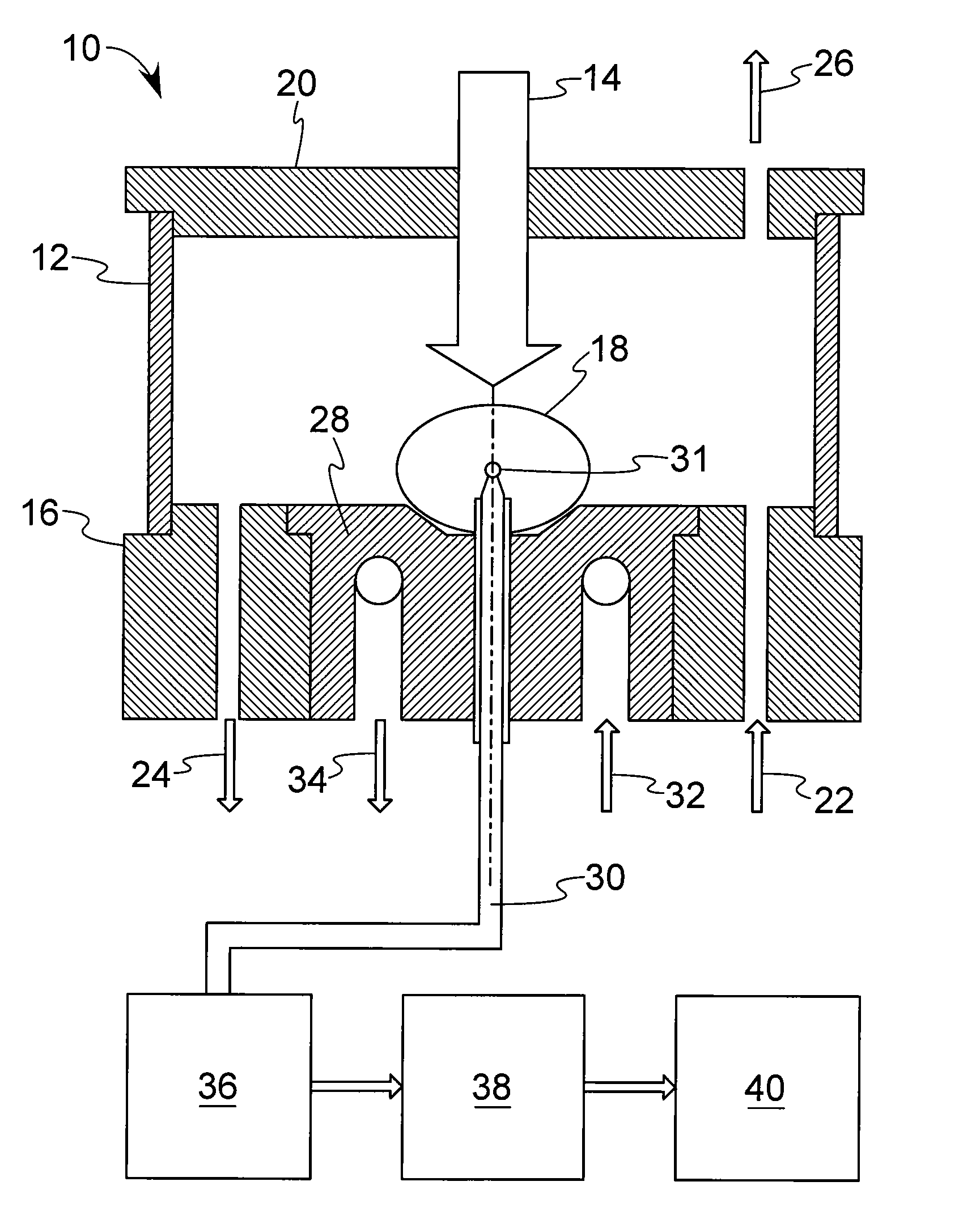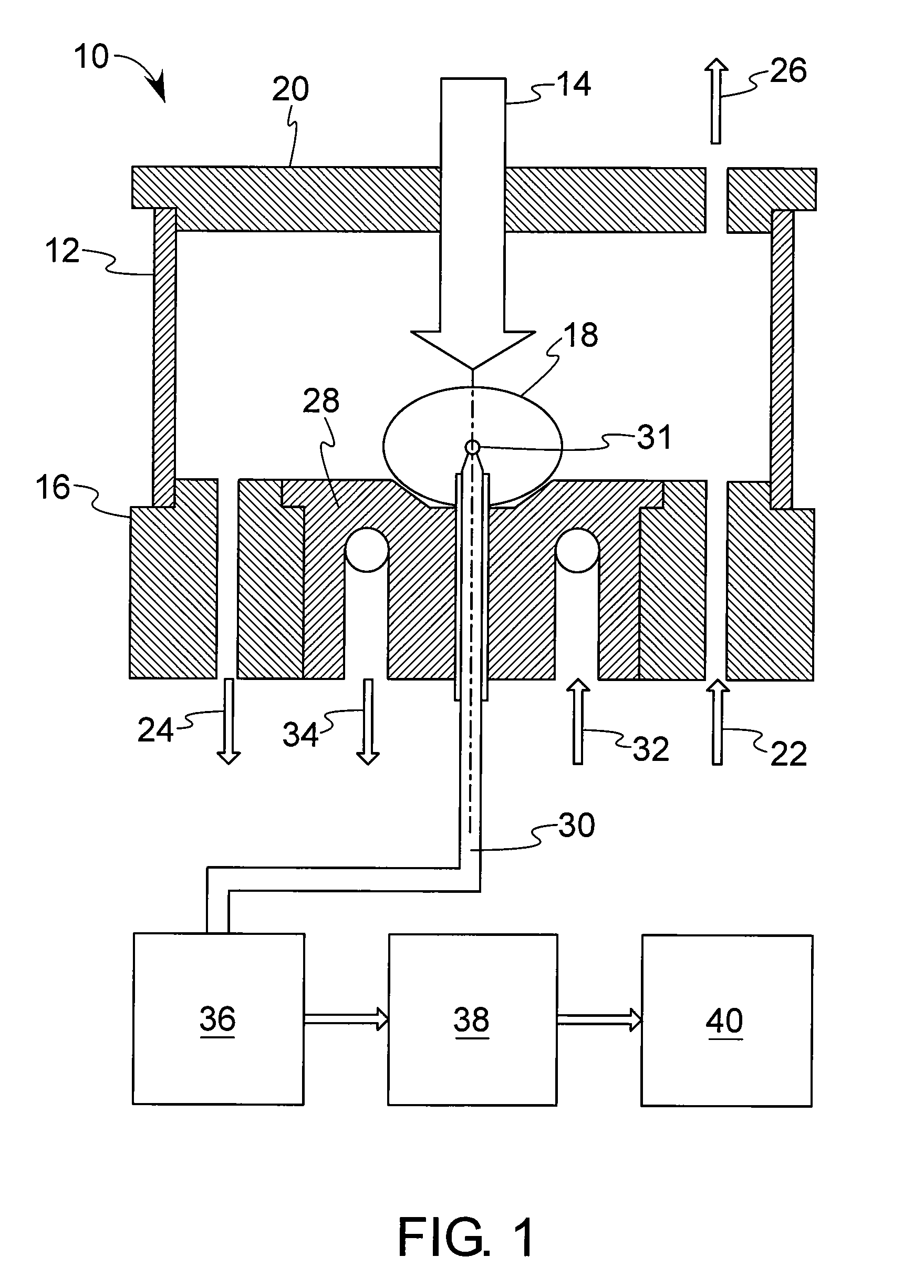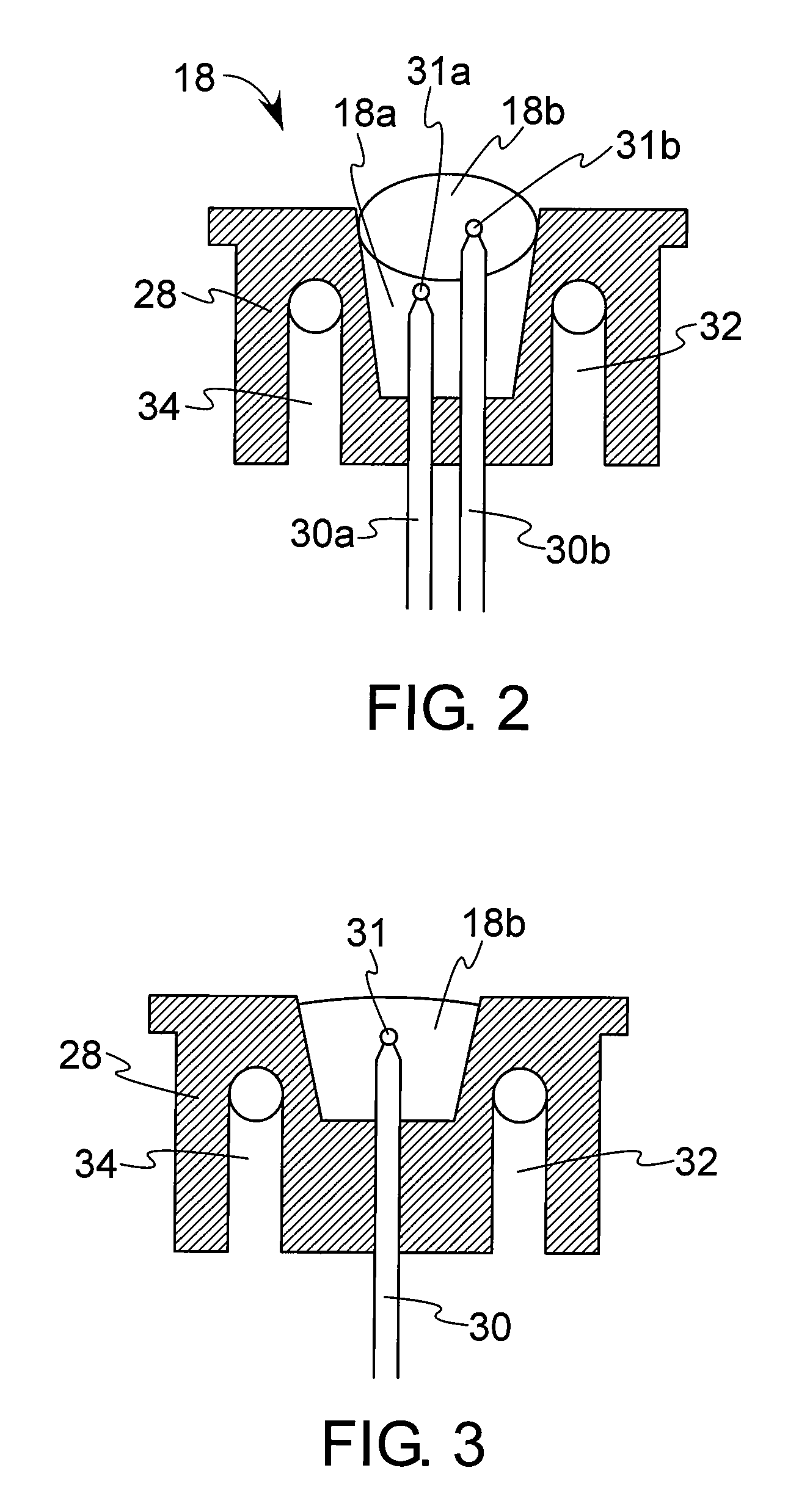Method and device for investigation of phase transformations in metals and alloys
a technology of phase transformation and metals, applied in the field of physical property measurement devices and devices for investigating phase/state changes, instruments, heat measurement, etc., can solve the problems of affecting the heating and cooling rate of the investigated specimen, affecting the application of traditional dta techniques using sophisticated and expensive devices, and achieving the effect of reliable, fast and inexpensive monitoring, and potential for determining weld solidification cracking susceptibility
- Summary
- Abstract
- Description
- Claims
- Application Information
AI Technical Summary
Benefits of technology
Problems solved by technology
Method used
Image
Examples
Embodiment Construction
[0042]Referring first to FIGS. 1 through 3, an embodiment of the device 10 according to the present invention includes a chamber 12, a source of energy 14, and a hearth 16 (shown with particularity as 16A) on which a specimen of material 18 is heated. Specimens 18 can exist in a solid state (i.e., not melted), solid-liquid state (i.e., partially melted) or liquid state (i.e., completely melted). The chamber 12 is made of a heat-resistant material (such as metals and their alloys), and forms a hermetic seal between the hearth 16 and a lid 20. In certain forms, the heat-resistant chamber material may be transparent, such as the aforementioned borosilicate glass. In one form, the chamber 12 forms a hermetic seal between the hearth 16 and lid 20. A controlled atmosphere is maintained in the chamber 12 to protect the specimen 18 from the surroundings, and may include an inlet 22 and outlet 24. In addition, a vacuum 26 can be used to help maintain the controlled atmosphere. The specimen 1...
PUM
 Login to View More
Login to View More Abstract
Description
Claims
Application Information
 Login to View More
Login to View More - R&D
- Intellectual Property
- Life Sciences
- Materials
- Tech Scout
- Unparalleled Data Quality
- Higher Quality Content
- 60% Fewer Hallucinations
Browse by: Latest US Patents, China's latest patents, Technical Efficacy Thesaurus, Application Domain, Technology Topic, Popular Technical Reports.
© 2025 PatSnap. All rights reserved.Legal|Privacy policy|Modern Slavery Act Transparency Statement|Sitemap|About US| Contact US: help@patsnap.com



